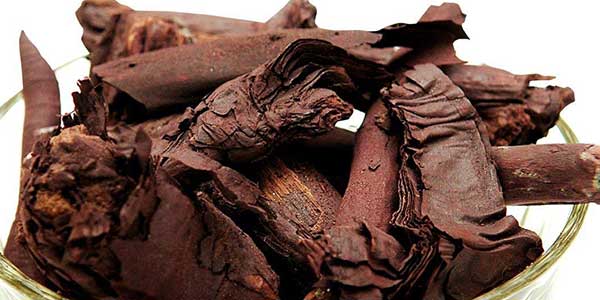Introduction
Alkanet, also known as Ratanjot or रतन जोत in Hindi, is a versatile herb that has been used for centuries due to its vibrant color and various medicinal properties. It belongs to the Boraginaceae family and is primarily found in the Mediterranean region and parts of Asia. In this comprehensive article, we will explore the origins of alkanet, its sources, applications, health benefits, potential side effects, and other valuable information.
“Alkanet” – Names In Other Languages
- Alkanet name in Hindi – Ratan jot (रतन जोत)
Origin and Sources
Alkanet has a rich history that dates back thousands of years. The herb is believed to have originated in the Mediterranean region and was later introduced to other parts of the world. It is commonly found in countries like Spain, Italy, France, Iran, India, and Pakistan.
The alkanet plant, scientifically known as Alkanna tinctoria, is a perennial herb with hairy leaves and clusters of vibrant blue or purple flowers. The plant’s root is the main source of alkanet dye, which has been traditionally used for coloring textiles, cosmetics, and even food.

Applications and Uses
Alkanet as Natural Dye
Alkanet root has been widely used as a natural dye for centuries. When the root is dried and powdered, it produces a rich reddish-purple color that can be used to dye fabrics, yarns, and even handmade papers. The dye obtained from alkanet is known for its colorfastness and has been a popular choice for natural dyers.
Culinary Purposes
In some cultures, alkanet is used as a food coloring agent. It is primarily added to certain dishes to enhance their visual appeal. However, it’s important to note that alkanet should be used sparingly in culinary applications due to its intense color.
Medicinal Uses of Alkanet (Ratan Jot)
Alkanet possesses several medicinal properties and has been used in traditional systems of medicine for various purposes. Some common uses include:
a. Skin Health: Alkanet has soothing properties and is often used topically to alleviate skin conditions like rashes, burns, and insect bites. It can be applied as a poultice or used in the form of an oil or salve.
b. Wound Healing: The herb is known for its wound-healing properties. It can be applied topically to promote the healing of cuts, bruises, and minor wounds.
c. Anti-inflammatory Effects: Alkanet has anti-inflammatory properties that can help reduce inflammation and swelling. It is often used in traditional remedies for conditions like arthritis, gout, and joint pain.
d. Digestive Aid: Alkanet is believed to have digestive benefits and is used in some herbal formulations to improve digestion, alleviate indigestion, and relieve constipation.
e. Respiratory Support: In certain traditional practices, alkanet is used to help relieve symptoms of respiratory conditions such as coughs, colds, and bronchitis.

Health Benefits of Alkanet (Ratan Jot)
Antioxidant Properties
Alkanet contains compounds with antioxidant properties that help protect the body against oxidative stress caused by free radicals. Antioxidants play a crucial role in maintaining overall health and reducing the risk of chronic diseases.
Anti-microbial Effects
Studies have shown that alkanet exhibits antimicrobial activity against certain bacteria and fungi. It may help inhibit the growth of harmful microorganisms and contribute to maintaining a healthy microbial balance.
Anti-inflammatory Effects
The anti-inflammatory properties of alkanet can help reduce inflammation in the body, which is linked to various chronic diseases, including cardiovascular conditions, arthritis, and certain types of cancer.
Skin Nourishment
Alkanet is known to nourish and moisturize the skin. It can be used in skincare products like lotions, creams, and oils to promote a healthy complexion and alleviate dryness.
Potential Side Effects of Alkanet
While alkanet is generally considered safe for external use and has a long history of traditional use, there are some potential side effects and precautions to be aware of:
Skin Sensitivity
Some individuals may be allergic or sensitive to alkanet. Before using alkanet-based products, it is recommended to perform a patch test on a small area of skin to check for any adverse reactions.
Internal Consumption
Alkanet is not recommended for internal consumption in large quantities, as it may cause gastrointestinal issues. It’s essential to use alkanet sparingly and in controlled amounts.
Purity of Products
When purchasing alkanet-based products, it’s important to ensure their quality and purity. Look for reputable brands or sources that offer organic or certified products to minimize the risk of contaminants or adulterants.

Conclusion
Alkanet, with its vivid color and numerous medicinal properties, has played a significant role in traditional practices around the world. From being a natural dye to offering various health benefits, this versatile herb continues to be utilized for different purposes. Whether you’re interested in exploring natural dyes, seeking natural remedies for skin issues, or simply intrigued by herbal traditions, alkanet is a fascinating herb worth discovering. However, always exercise caution, follow recommended dosages, and consult a healthcare professional if you have any concerns or pre-existing conditions before using alkanet-based products.